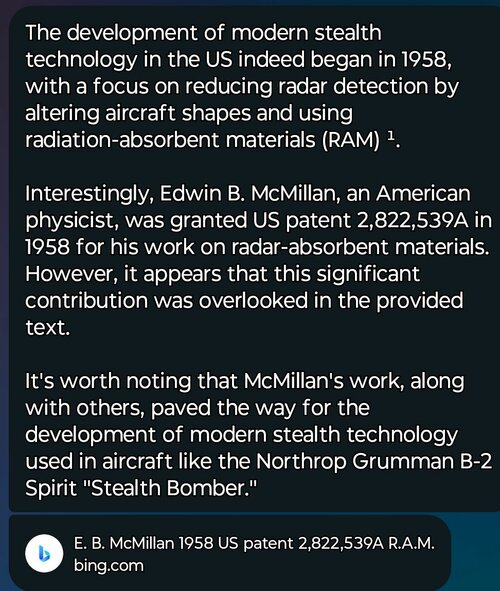German Flying Wings Bibliography
‘Gegenüberstellung 8-229 Go P-60’ by Nauber. Translation of captured enemy document, F-TS525-RE 21, February 1946, by Intelligence T-2, Air Document Division, Headquarters Air Technical Service Command, Wright Field.
‘Vorlaufige Baubeschreibung der Nurflügel 229’ by Schmid. Translation of captured enemy document, F-TS526-RE, 24 February 1946, by Intelligence T-2, Air Document Division, Headquarters Air Technical Service Command, Wright Field.
‘Towards the Ideal Aircraft’ by Alain Pelletier, Air Enthusiast Nº 64, July/August 1996.
‘Horten 229’ by David Myhra, Monogram Close-up 12, 1983.
‘Ho 229’ by Arthur L. Bentley, Scale Aviation Modeller International, August 2005.
‘Die Gebrüden Horten und ihre Nurflügelflugzeuge’ by E. Uden, Modell Fan, Juli 2001.
‘Horten Exotica’, Air Enthusiast/Thirty-One.
‘German Secret Weapons: Blueprint for Mars’ by Brian J. Ford, Ballantine Books, 1972.
‘Secret Weapons: Technology, Science and the Race to Win World War II’ by Brian J. Ford, Bloomsbury Publishing, 2011.
‘Electronic Combat over the Third Reich’ by Major Stephen R. Fraley, Air Command and Staff College. AD-A215-411.
‘Augen durch Nach und Nebel’ by Cajus Bekker, Gerhard Stalling Verlag, Oldemburg 1958.
‘The radar eye blinded: the USAF and electronic warfare 1945-1955’ by Lt.Col. Daniel T. Kuehl, AFIT/CI, Wright Patterson AFB. AD-A265-494.
‘Nurflügel, Die Geschichte der Horten Flugzeuge 1933-1960’ by Reimar Horten and Peter F. Selinger, Weishaupt Verlag, Graz, 1985.
‘The Horten Brothers and their all-wing aircraft’ by David Myhra, Schiffer, 1998.
‘Jet Planes of the Third Reich’ by J. Richard Smith and Eddie J. Creek, Monogram 1982.
‘The Warplanes of the Third Reich’ by William Green, Galahad Books, 1970.
‘Luftwaffe Secret Projects, Fighters, 1939-1945’ by Walter Schick and Ingolf Meyer, Midland 1997.
‘Luftwaffe Secret Projects, Bombers, 1935-1945’ by Dieter Herwig and Heinz Rode, Midland 2000.
‘Luftwaffe Secret Projects, Ground Attack and Special Purpose Aircraft’ by Dieter Herwig and Heinz Rode, Midland 2003.
‘Geheimprojekte der Luftwaffe, Band II, Strategische Bomber 1935-1945’ by Dieter Herwig and Heinz Rode, Motorbuch Verlag, 1988.
‘Jet Planes of the Third Reich, The Secret Projects, Volume one’ by Manfred Griehl, Monogram 1998.
‘Jet Planes of the Third Reich, The Secret Projects, Volume two’ by Manfred Griehl, Monogram 2004.
‘Schlachtflugzeuge und Kampfzerstörer 1935-1945’ by Dieter Herwig and Heinz Rode, Motorbuch Verlag, 2002.
‘Deutsche Nurflügel bis 1945’ by Hans-Peter Dabrowski, Podzun-Pallas Verlag.
‘Horten Ho 229 Spirit of Thuringia’ by Huib Ottens, Classic, 2006.
‘Les Ailes Volantes’ by Alain Pelletier, E-T-A-I, 1999.
‘German Jet Genesis’ by David Masters, Jane’s, 1982.
‘Paper Planes of the Third Reich’ by F/Lt. J.L. newton, Toros Publications, 1988.
‘German aircraft, new and projected types’ by Sqn. Leader H.F. King, Air Intelligence Report Nº 2383, January 1946.
‘German Aircraft Paints’ by G. Palmer at al. BIOS Final Report 365.c.1945.
‘Ein Dreieck Fliegt’ by Alexander Lippisch, Motorbuch Verlag, 1976.
‘Last Talons of the Eagle’ by Gary Hyland and Anton Gill, Headline, 1998.
‘Luftwaffe over America’ by Manfred Griehl, Pen & Sword, 2016.
‘Die deutschen Funkmessersfahren bis 1945’ by Fritz Trenkle, Motorbuch Verlag, 1986.
‘Die deutsche luftrüstung 1933-1945, Band 1 to 4’ by Heinz J. Nowarra, Bernard & Graefe Verlag, 1986.
‘Nurfügel, Die Ho 229-Vorläufen der heutingen B2’ by Hans-Peter Dabrowski, Waffen-Arsenal S-17, 1990.
‘The Horten tailless aircraft, British Intelligence Objectives Sub-Committee, Item Nº25, File Nº XXIII-6, May 1945.
‘The Horten Tailless Aircraft’ by K.G. Wilkinson, B.Sc. D.I.C. Farnborough Hants.
‘Horten Tailless Aircraft’, by M.A. Biot, Lieut.Comdr, USNR. Technical Report No.76-45. Central Air Documents Office. Intelligence Department. Air Material Command. Wright-Patterson AFB.
‘Horten Tailless Aircraft’, by M.A. Biot, Combined Intelligence Objectives Sub-Committee (CIOS) Reports. File Nº XXIII (6). 1945.
‘The Horten Tailless Aircraft’, by K.G. Wilkinson, B.Sc.D.I.C. R.A.E. Report No. F.A. 259/1. Tech Note No. Aero. 1703, October 1945.
‘Investigation of German Aircraft Protective Coatings’, US Naval Technical Mission in Europe. BIOS Miscelaneous Report 54. 1945.
‘Stealth Bomber’ by Bill Sweetman, Airlife, 1989.
‘The Vanishing Paperclips’, by Hans H. Amtmann, Monogram, 1988.
‘Hitler’s Secret Weapons 1933-1945: The Essential Facts and Figures for Germany’s Secret Weapons Program’, by David Porter, Amber, 2010.
‘Research Activities at Göttingen on Aerodynamics of Projectiles, Missiles and Ramjets’, by R.H. Norris. CIOS Report. File Nº XXVII (86). c. 1945.
http://www.twitt.org/Farnborough_02.html
Electronic Warfare Against the Axis
https://vc.airvectors.net/ttwiz_08.html
German WW2 ECM (Electronic countermeasures)
https://www.qsl.net/ab4oj/nsprog/german_ecm.pdf
Electronic Countermeasures - The Art of Jamming
https://www.rfcafe.com/references/e...rmeasures-electronics-world-december-1959.htm
